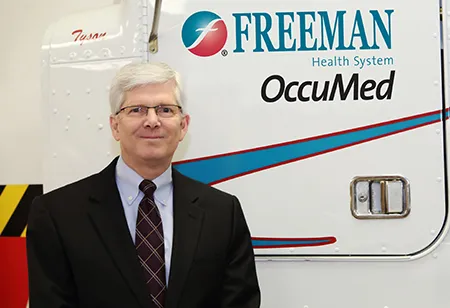Thank you for Subscribing to Healthcare Business Review Weekly Brief

From Hire to Retire, Three Reasons to Partner with an Occupational Medicine Provider
Healthcare Business Review
More than 164 million people make up the American work force, and most people spend 40 hours (or more) of their week at work. With such a large investment in human capital, protecting your investment through prevention and treatment of workplace injury and illness only makes dollars and sense.
Occupational medicine (formerly called industrial medicine until the 1960s) helps businesses keep workers healthy and productive. These goals are accomplished through services such as drug screens, physicals, medical monitoring and injury care tailored to the unique needs of each industry.
Occupational medicine clinics create a positive domino effect within a health system
If you’re not already partnered with an occupational medicine provider dedicated to worker care, here’s what they do for you:
1. Provide excellence in patient care
Early and easy access to injury treatment leads to better outcomes for patients, improved worker morale and fewer lost time days. Occupational medicine providers specialize in acute and long-term injury care, with mechanisms to bring closure to a lingering work comp case. Studies show that patients who return to work, even on modified duty, will recover from their injury more quickly. While both primary care (PCP) and occupational medicine providers focus on prevention and health education, occupational medicine clinics expand these services by offering diagnostic tests to determine if a worker is medically safe to perform a job or return to work following an injury. Most PCPs do not have the equipment, testing ability, space or certifications to provide pre-employment tests or return to work evaluations.
2. Protect your business
Regulatory bodies can quickly muddle into an alphabet soup of compliance requirements. An occupational medicine provider stays up-to-date on changing rules and regulations and ensures your company remains compliant. This may include annual exams such as physicals, hearing and vision tests, respiratory protection programs or exposure monitoring. Occupational medicine providers have a big-picture view of the overall health of employees at work and can make recommendations if they identify a gap. Furthermore, occupational medicine clinics provide conservative care that is appropriate to the patient while considering the treatment’s impact on OSHA record-keeping requirements.
3. Serve as a referral source
Occupational medicine clinics create a positive domino effect within a health system. First, they protect the healthcare entity’s own employees. Second, a strong program serves as pathway to build relationships with local businesses. As these relationships grow, businesses begin referring to other service lines within a health system, such as urgent care, emergency departments, primary care and more. While it’s important for an occupational medicine clinic to be profitable, the indirect revenue gained through referrals further demonstrates the value of such a program.
Great relationships lead to great patient care. A business that builds a strong relationship with an occupational medicine provider can be confident their new hires and current employees are medically sound to safely perform their job duties, while enjoying the byproduct of increased referrals to other service lines within the organization.









